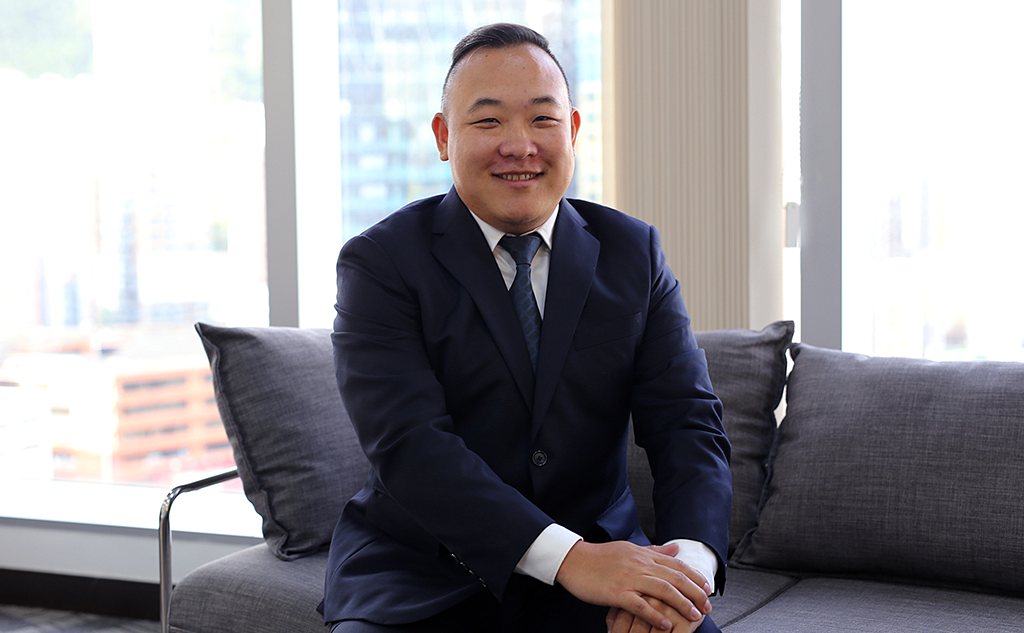Can you please introduce yourself and remind us of your role in your organisation?
I am currently the head of CNA Recycling Hong Kong, an organization which specializes in recycling all types of liquid crystal display devices. Our vision is to practice circular economy through employing a sustainable and regenerative approach toward waste management.
I entered the metal recycling industry in the U.K. in 2005, which led me to establish a WEEE recycling firm eight years later in Hong Kong. Approximately two years after that, I licensed the technologies of display panels recycling and liquid crystal purification from ITRI, Taiwan. The process was essentially designed to extract the faulty or old liquid crystal content from the displays and purify it to the point where it was ready to be restored and reused in the LCD factory. This way, we extend the life cycle of materials and resources, ensuring a zerowaste production process.
My team cooperated with the Industrial Technology Research Institute in Taiwan to provide first rate solutions and services to display and new material businesses all over the world. We set up the first process line in New Jersey, USA for the recycling of display panels in 2017 and collaborated with Gigaset AG, the company in Germany which manufactured green, cordless phones from recycled materials in 2018, significantly reducing carbon emissions in the production process.
Our most recent project is based in China and founded in 2020, where we mainly focus our effort on providing polyimide (PI) purification and liquid crystal purification technology to factories that manufacture display panels.
In recent years, technological development and improving standards of life contribute to an increasingly frequent use of liquid crystal and plasma display television sets, cell phones, tablets and personal computers. However, along came technological and environmental challenges. By the end of the life span of these devices, they could contribute to the issue of waste. According to statistics provided by a journal article published by the United States’ National Institutes of Health, LCD panels contribute to over 40% of the waste, which would amount to approximately 25.000 cubed meters in Europe.
My team has revolutionized the recycling process of electronic devices and made it possible for the glass screens and LCD displays to be reused, allowing computers, cell phones, as well as tablets to be 100% recyclable. Take cell phones as an example, the weight of the glass screen is about 25-30% of the phone itself. Therefore, making the screen recyclable would significantly improve the recycling rates of technology companies and completely eliminate waste.
In 2018 we were able to build the 32-inch HD LCD television monitor with the recycled liquid crystal, and in 2021 our technology made it possible to reuse liquid crystal to build HD 8K television screens up to 65 inches. Our next step in practicing circular economy would be to repurpose LCD waste into creating 6-inch 2K smartphone screens.
Why did you choose to visit Pollutec in 2018?
In 2018 I chose to be a part of Pollutec because its extensive exhibit was one that was joined by professionals all around the globe who were passionate about issues related to the environment and energy. I believe that Pollutec is a place where exciting conversations would take place. Thus, I was honored to be invited to the exhibit to share our vision toward solving the issues of pollution caused by LCD waste, to showcase our regenerative technology regarding LCD screens and liquid purification, and to meet and engage with fellow environmental enthusiasts.
What did you like most in Pollutec ? According to you, what makes it different from other trade shows? / What did you gain from your last visit to Pollutec and what will you tell others who still hesitate to visit the show?
Pollutec made an impression on me in 2018 with its openness and accessibility. The exhibit offered every player in the industry, from the leaders in the tech industry to new start-ups, an opportunity to express their ideas, participate in discussion, and explore new possibilities that emerge. I was drawn in by the dynamic of the exhibit which was inclusive and fluid where all the members shared a common purpose to progress on the conversation of environmental issues.
What are your current needs in terms of technology? What are you looking for at Pollutec in 2021? What are your expectations?
The 2018 exhibit was informative to me as it shed light on some of the most cutting-edge tech news in the European market, which was valuable information for my team as we continue to venture into the European industry to provide more advanced LCD regenerative technologies to our clients there. Our current interest is in empowering operations by incorporating renewable energy into their manufacturing processes and adopting logistics that reduce fuel use and carbon footprints. We hope to see Pollutec showcase more technology featuring low-carbon circular economy, in which the whole value chain is optimised for minimum climate impact. As we launch our new purification technology of the remaining liquid crystal (LC) and defective polyimide (PI) from the production line of the panel display, we are thrilled to share it with new friends in the industry in the coming 2021 exhibit. Hopefully, this event would allow us to explore new opportunities for business and partnership.
To be explored: Pollutec marketplace of solutions




